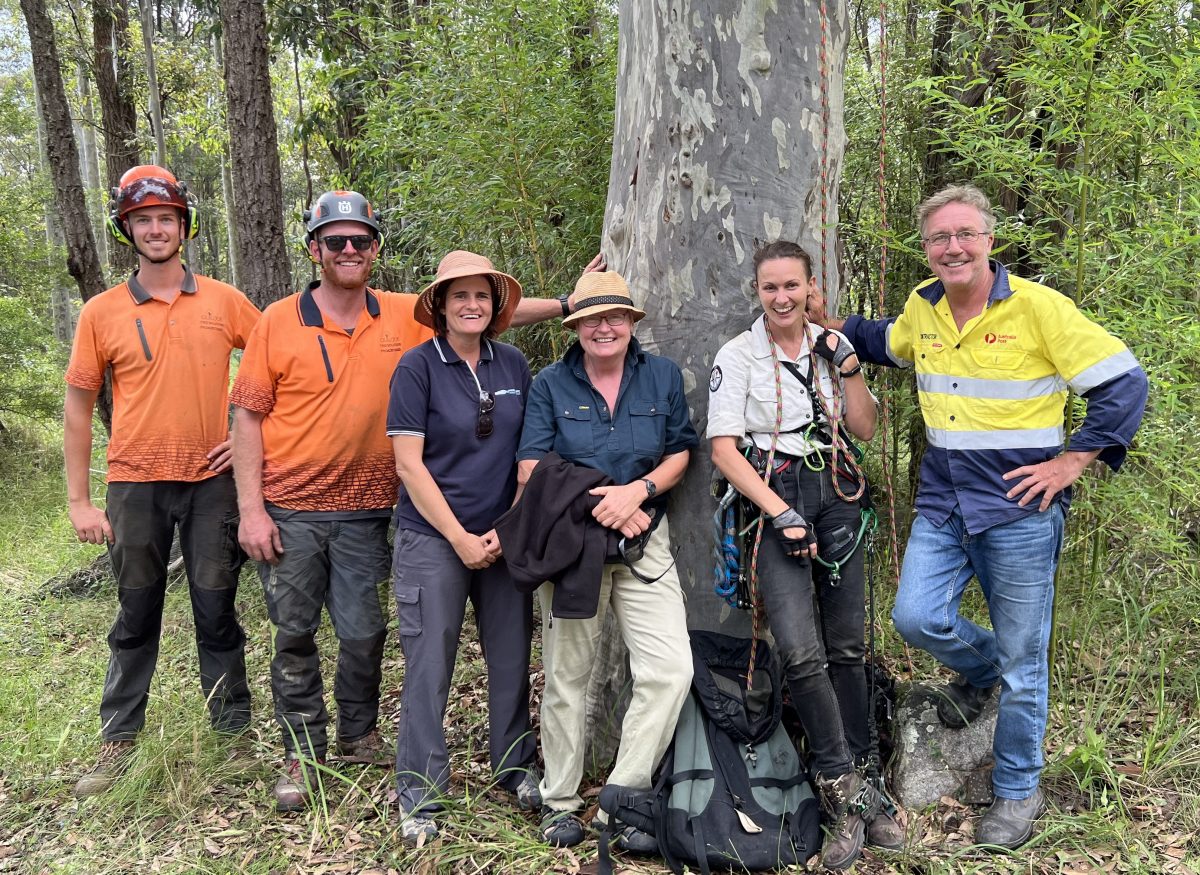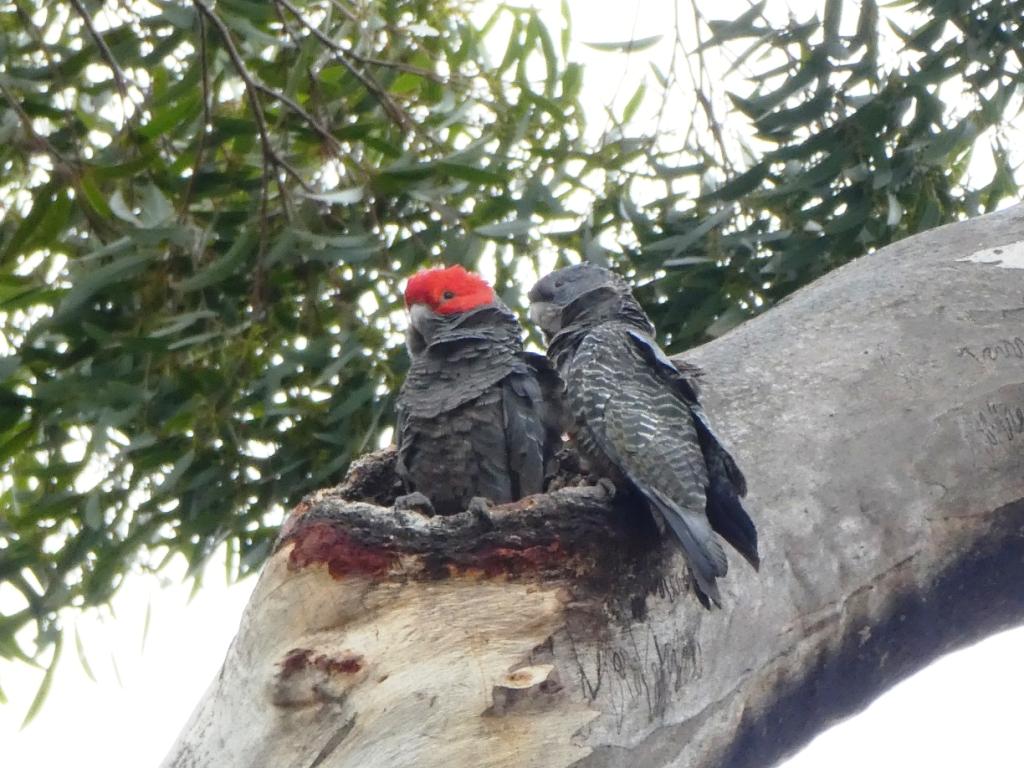
The Gang-gang gang – Joshua Maloney, James Weston, Courtney Fink-Downes, Dr Susan Rhind, Dr Laura Rayner and James Rickard at Mogendoura. Photo: Eurobodalla Shire Council.
Calling all bird enthusiasts. Researchers need your help to spot one of the nation’s most iconic, yet threatened bird species – the Gang-gang cockatoo.
Canberra woodland bird specialist Dr Laura Rayner has spent the past 10 years researching the endangered Australian bird. Statistics show there’s been a 69 per cent decline in the species since the turn of the century.
Dr Rayner has been collecting data from natural Gang-gang nesting hollows around the capital region to determine if they are actually being used for breeding or not.
She said there was very limited data available when it came to Gang-gang breeding.
“It’s hard to find nesting sites. So when we do, we measure everything we can,” Dr Rayner said.
“Researchers are coordinating projects to secure the Gang-gang’s future.”
One of those projects – “Cockatubes” – has been introduced by biologist Susan Rhind in conjunction with Eurobodalla Shire Council’s natural resources supervisor Courtney Fink-Downes.
“The money is always scarce but this project has been very collaborative – researchers, government staff, citizen scientists and community groups,” Dr Rhind said.
Cockatubes involve creating artificial breeding hollows around the Eurobodalla to attract the birds. Researchers hope they will provide an opportunity to observe the behaviours of the Gang-gangs and help in their conservation.
“We’ve located natural hollows where Gang-gangs have shown interest, and installed 32 scientifically designed nest tubes in areas nearby,” Dr Rhind said.
“We want to know if they will use these.
“We’ve got lots of records of birds showing interest in a hollow, but it doesn’t mean they are breeding there. That’s where we rely on Laura’s (Dr Rayner’s) knowledge.”
The Gang-gangs have been spotted in a number of coastal locations, including South Durras, Long Beach, Mogendoura, North Narooma, Tilba, Broulee, Tomakin and Mossy Point.

Two Gang-gang chicks about to fledge from a tree hollow. Photo: Eurobodalla Shire Council.
But Dr Rhind said unless chicks were spotted in the nest, it was hard to determine if a tree hollow had been used for breeding.
“One indicator is woodchips in the hollow, where the adults have chewed up wood to create a comfortable nest lining,” she said.
“We don’t even know where Gang-gangs go or whether they stay here with us on the coast during the winter.
“The word is that they spend their winters in ‘the mountains’. We need our great Gang-gang watchers to tell us if this is true.”
Over the next two months, Dr Rhind is hoping community members will alert the research team if they spot Gang-gang nesting sites around the Eurobodalla.
“We are obsessively interested in finding those nests,” she said.
“That involves working with landowners who may have Gang-gangs nesting on their properties, and working with interested people happy to report sightings, watch tree hollows and the already installed nest tubes.
“This is citizen science at its best and we’re always looking for more people to be involved.”
The Gang-gang researchers will be monitoring the nest-tubes over the next five years.
If you spot Gang-gangs, record the sighting on iNaturalist, or email [email protected].
Original Article published by Evelyn Karatzas on Riotact.




